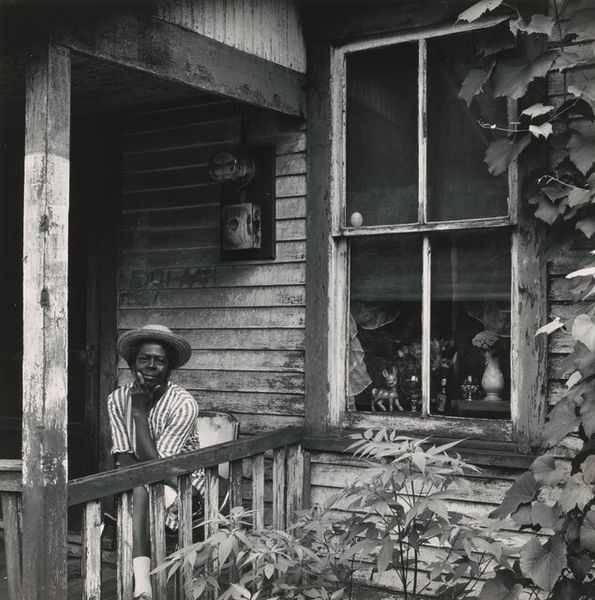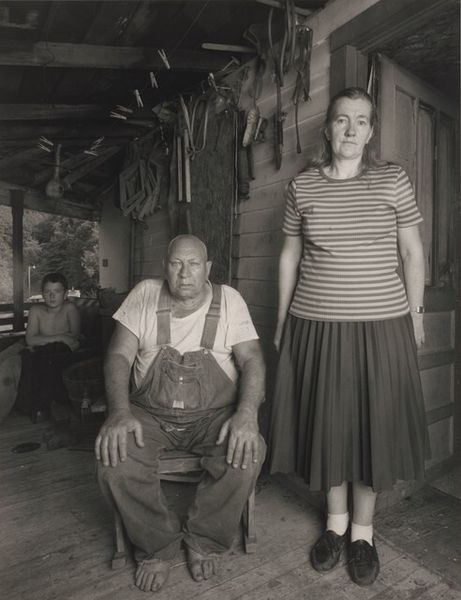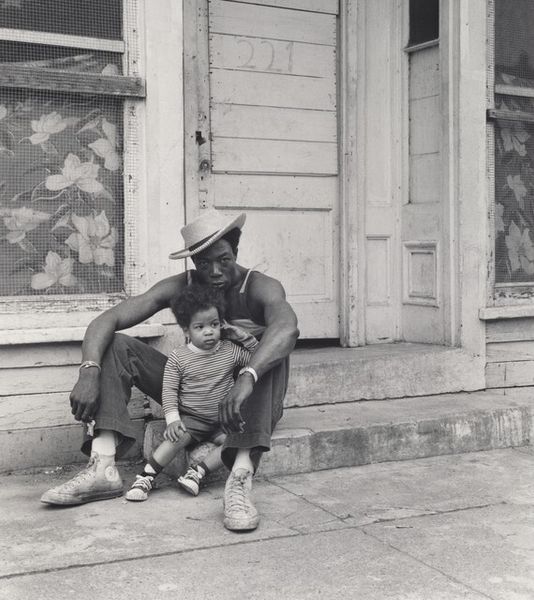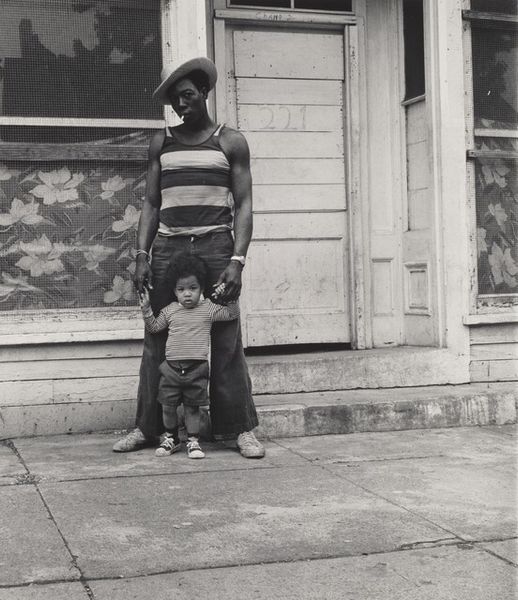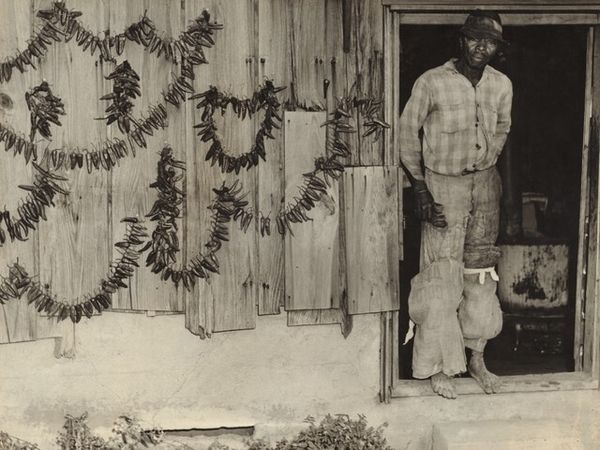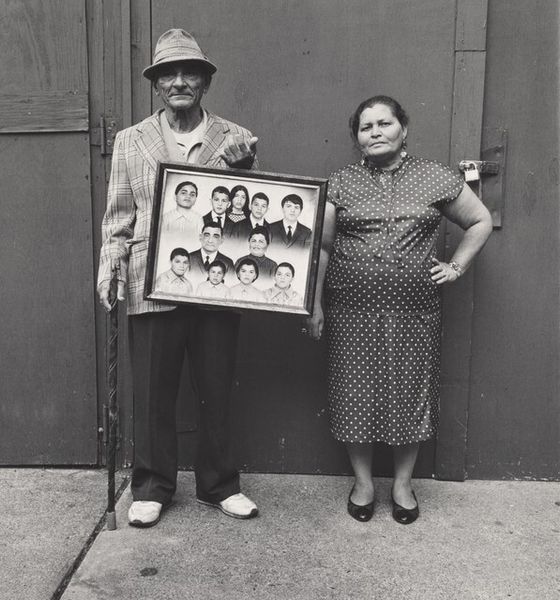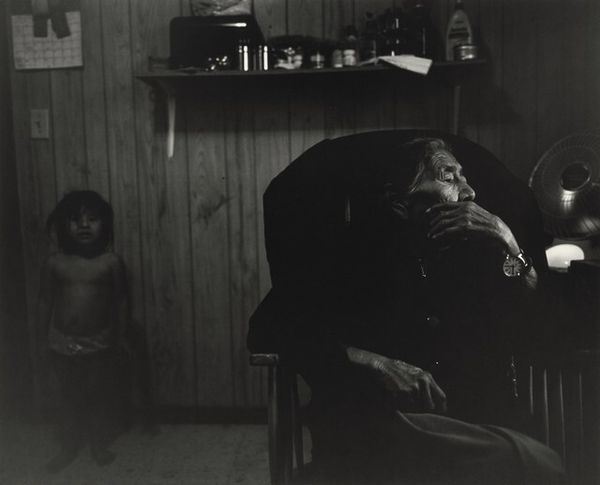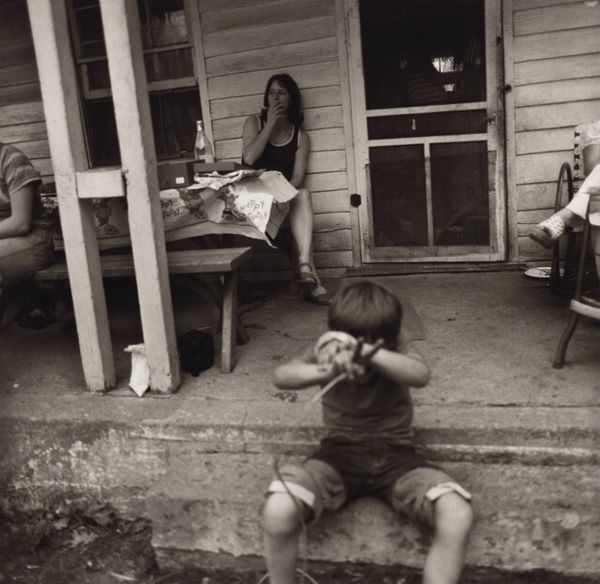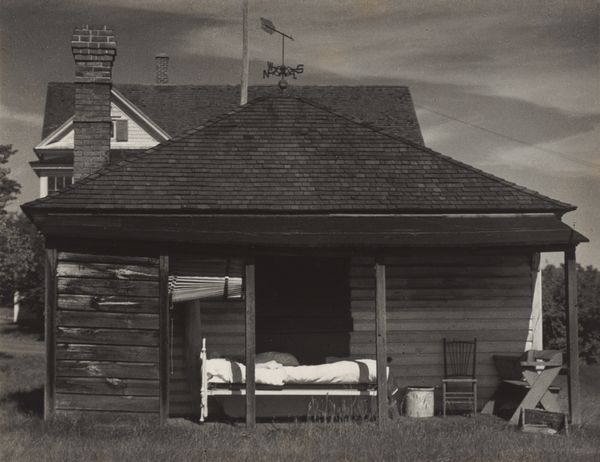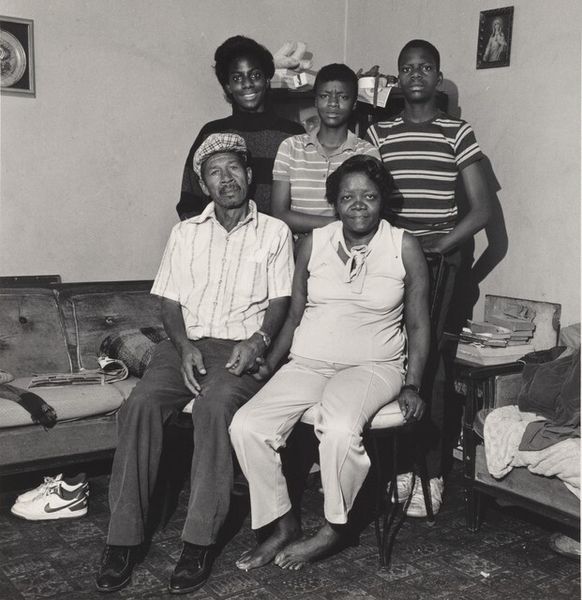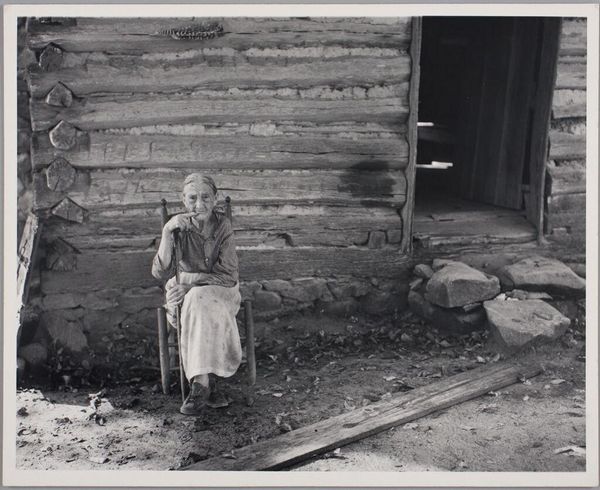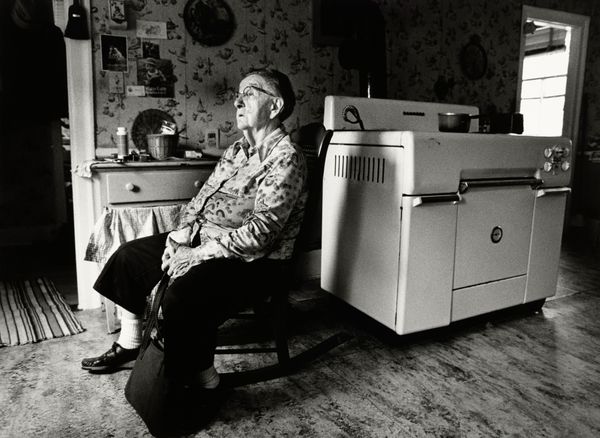
Hubert Morrison with His Wife and Dog, Atlas Steel (Working People series) 1987
0:00
0:00
photography
#
portrait
#
contemporary
#
black and white photography
#
photo restoration
#
black and white format
#
warm monochrome
#
social-realism
#
archive photography
#
photography
#
historical photography
#
black and white theme
#
black and white
#
monochrome photography
#
monochrome
#
realism
Dimensions: image: 17.5 x 14.6 cm (6 7/8 x 5 3/4 in.) sheet: 25.2 x 20.3 cm (9 15/16 x 8 in.)
Copyright: National Gallery of Art: CC0 1.0
Curator: What a strikingly composed portrait. I see balanced geometry in the house’s facade, almost a stage-like backdrop framing the subjects. The grayscale enhances the texture and linear qualities, wouldn't you agree? Editor: It's a deeply evocative image, yes. But more than its formal composition, it feels raw. There's a starkness to this 1987 photograph by Milton Rogovin titled, "Hubert Morrison with His Wife and Dog, Atlas Steel (Working People series)." You immediately sense the weight of their history, their place within the labor system. Curator: I appreciate the emphasis on the subjects' place in the social structure; still, it's hard to ignore the structural relationships within the frame itself. Consider how the lines of the house siding draw the eye to the window above, echoing the shape of the doorway, each element interacting in careful triangulation. Editor: Absolutely, but the objects scattered around are not neutral either! The tools, the bucket. Each element points toward the material circumstances. The dog at the center, that feels both intimate and symbolic. The materials of daily life—the house siding itself—speak to the everyday realities and even potential precarity. Curator: A formal assessment of texture yields some interesting results: coarse siding contrasted with the smoothness of faces, and rough ground near soft animal fur, offering nuanced details within a limited tonal palette. Editor: Precisely. Consider the visual narrative constructed from those textures—the evidence of human labor etched onto a seemingly unremarkable domestic space, connecting directly to the “Working People” series designation. Rogovin's strategic use of direct, unadorned photographic style serves a very specific social message, bringing us face-to-face with dignity and survival in the face of likely industrial pressures. Curator: So, despite the potential for differing frameworks, a combined focus—from surface textures to deeper socio-economic context—illuminates this image quite thoroughly. Editor: Agreed, viewing Rogovin's piece in a multidimensional approach reveals its complexities in art, labor, life and meaning in art history.
Comments
No comments
Be the first to comment and join the conversation on the ultimate creative platform.
